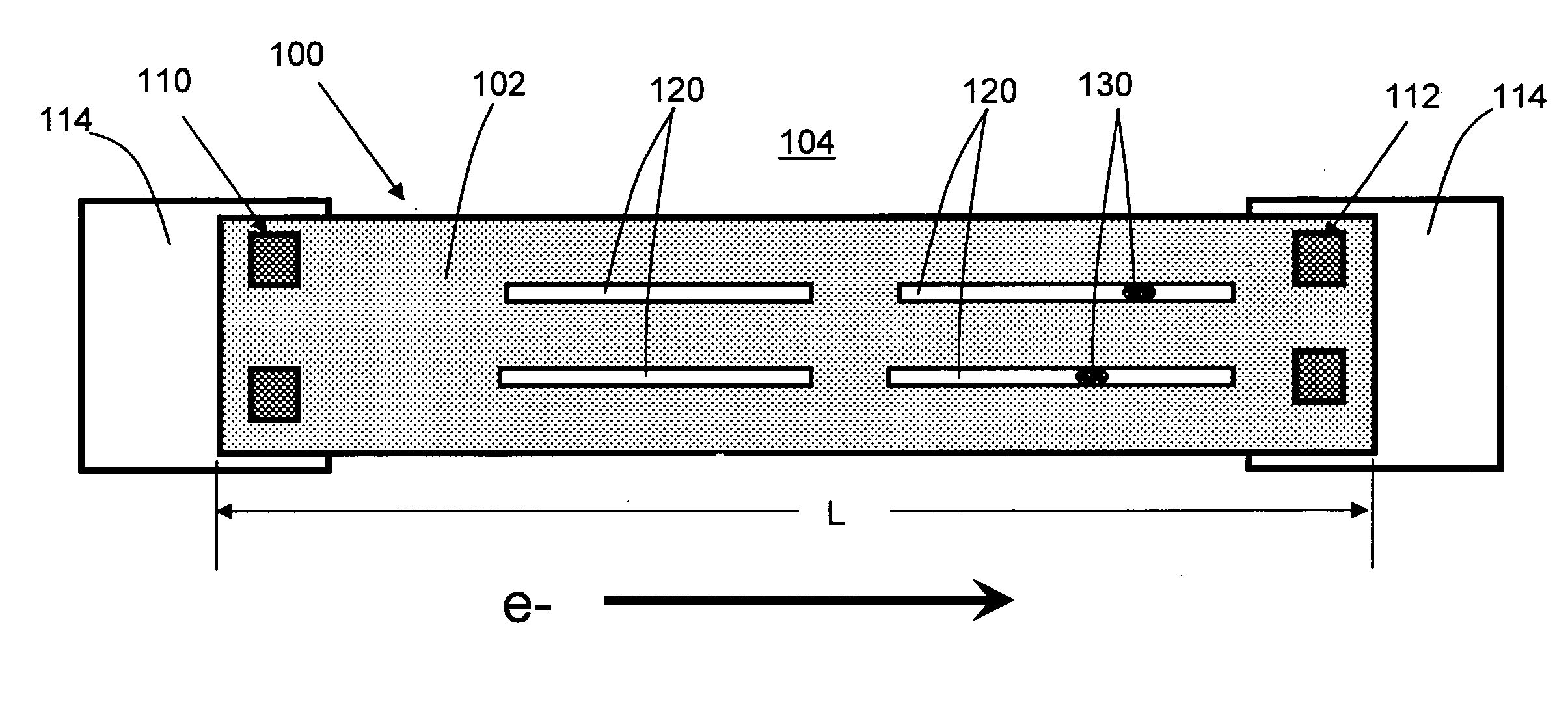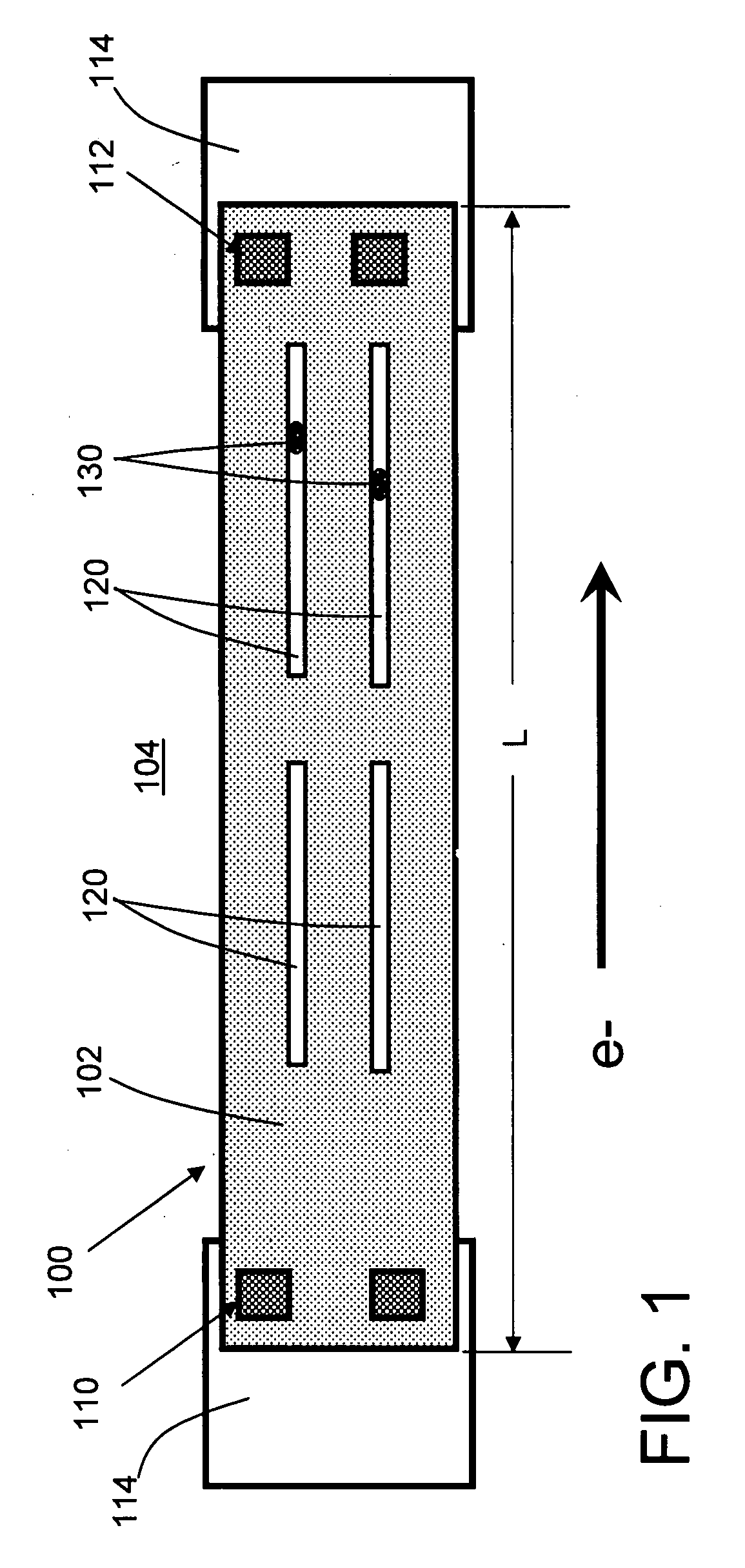Slots to reduce electromigration failure in back end of line structure
a back end and line structure technology, applied in the direction of semiconductor devices, semiconductor/solid-state device details, electrical apparatus, etc., can solve the problems of electrical shorts with neighboring lines, copper depletion, and the increase of resistance of dominant electromigration failures, so as to reduce electromigration failures
- Summary
- Abstract
- Description
- Claims
- Application Information
AI Technical Summary
Benefits of technology
Problems solved by technology
Method used
Image
Examples
Embodiment Construction
[0012]Turning to the drawing, FIG. 1 shows a back end of line (BEOL) structure 100 according to the disclosure. In one embodiment, BEOL structure 100 (hereinafter simply “structure 100”) includes a copper line 102 in a low-k dielectric 104. Low-k dielectric 104 may be any dielectric having a dielectric constant k of less than approximately 3.2. Illustrative low-k materials may include but are not limited to: octamethyleyclotetrasiloxane (OMCTS), hydrogenated silicon oxycarbide (SiCOH), porous SiCOH, boro-phosho-silicate glass (BPSG), silsesquioxanes, carbon (C) doped oxides (i.e., organosilicates) that include atoms of silicon (Si), carbon (C), oxygen (O), and / or hydrogen (H), thermosetting polyarylene ethers, SiLK (a polyarylene ether available from Dow Chemical Corporation) or layers thereof. Copper line 102 is connected at one end to a cathode via 110 and at another end to an anode via 112. Underlying layers 114 are also shown.
[0013]Structure 100 also includes a plurality of slot...
PUM
 Login to View More
Login to View More Abstract
Description
Claims
Application Information
 Login to View More
Login to View More - R&D
- Intellectual Property
- Life Sciences
- Materials
- Tech Scout
- Unparalleled Data Quality
- Higher Quality Content
- 60% Fewer Hallucinations
Browse by: Latest US Patents, China's latest patents, Technical Efficacy Thesaurus, Application Domain, Technology Topic, Popular Technical Reports.
© 2025 PatSnap. All rights reserved.Legal|Privacy policy|Modern Slavery Act Transparency Statement|Sitemap|About US| Contact US: help@patsnap.com


